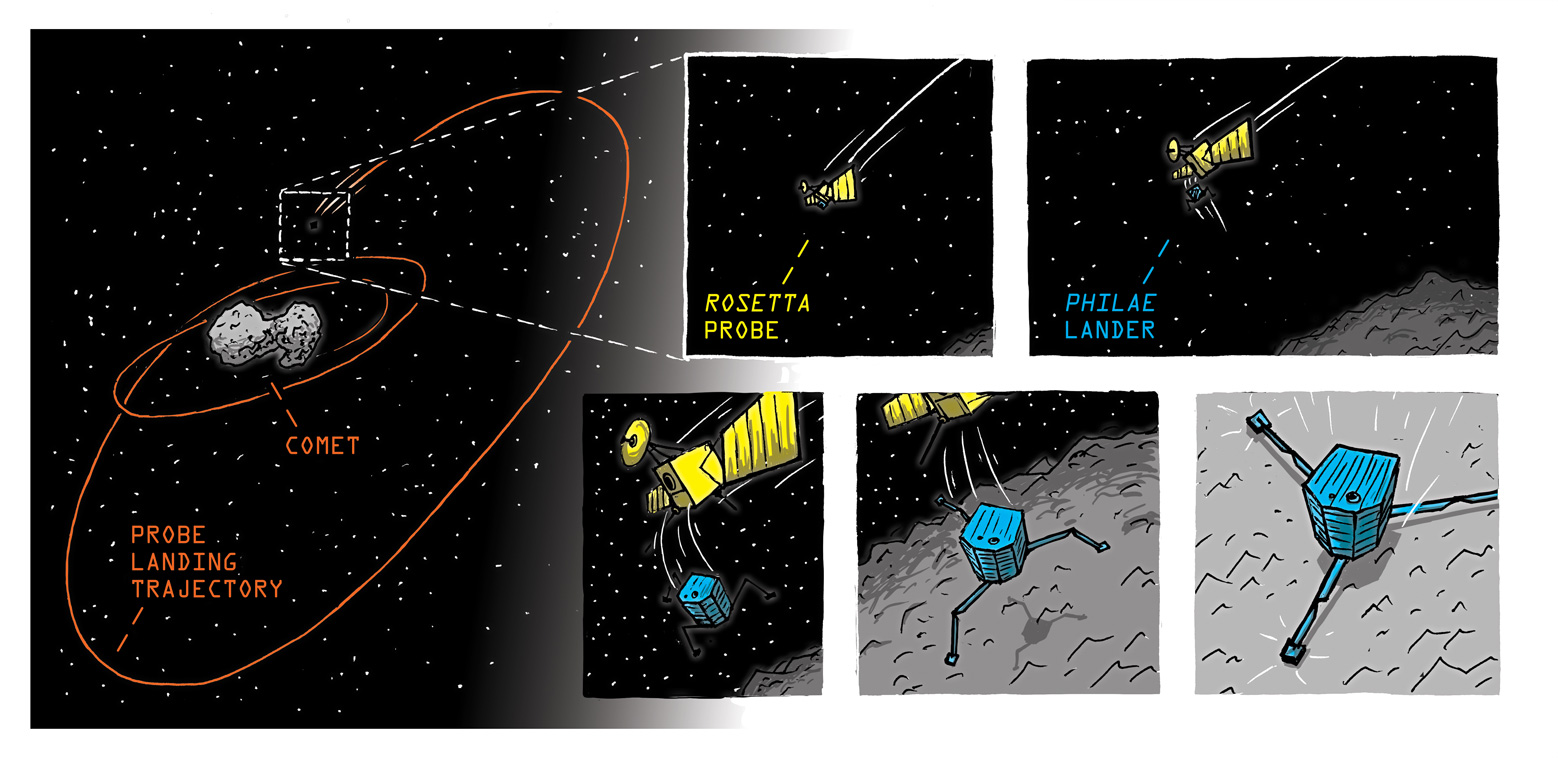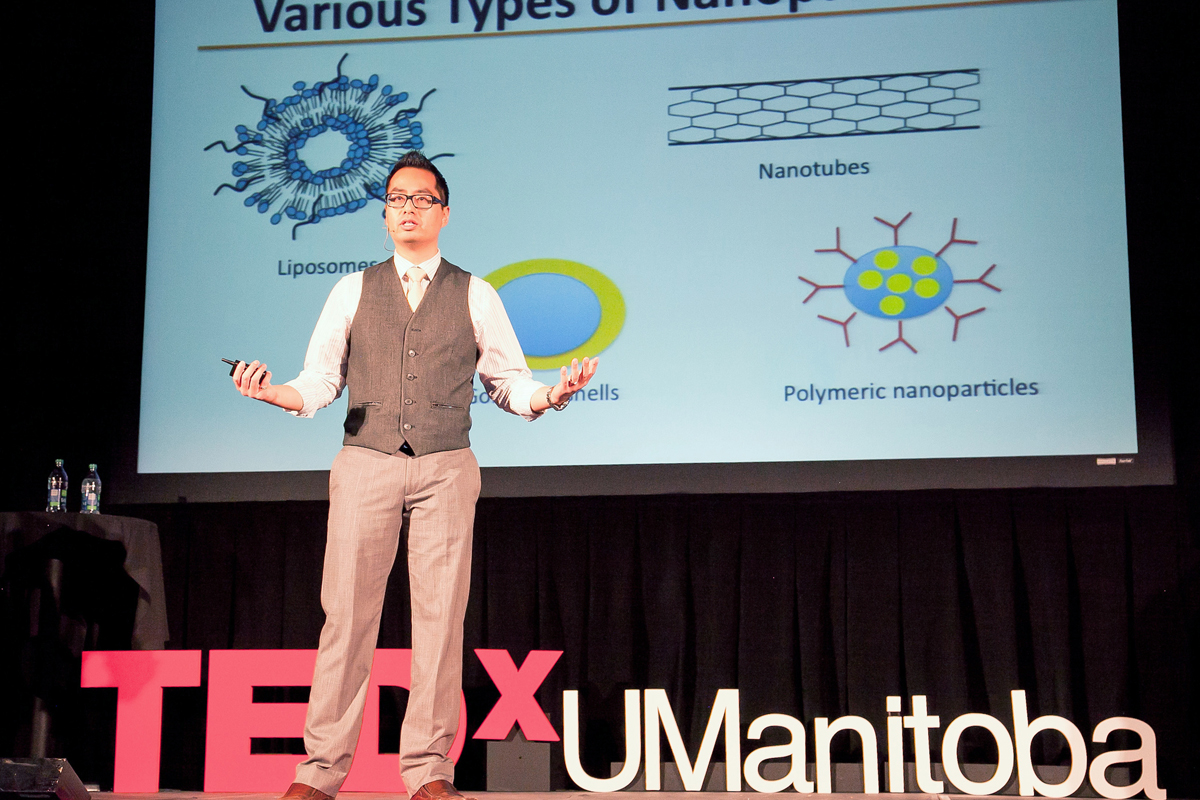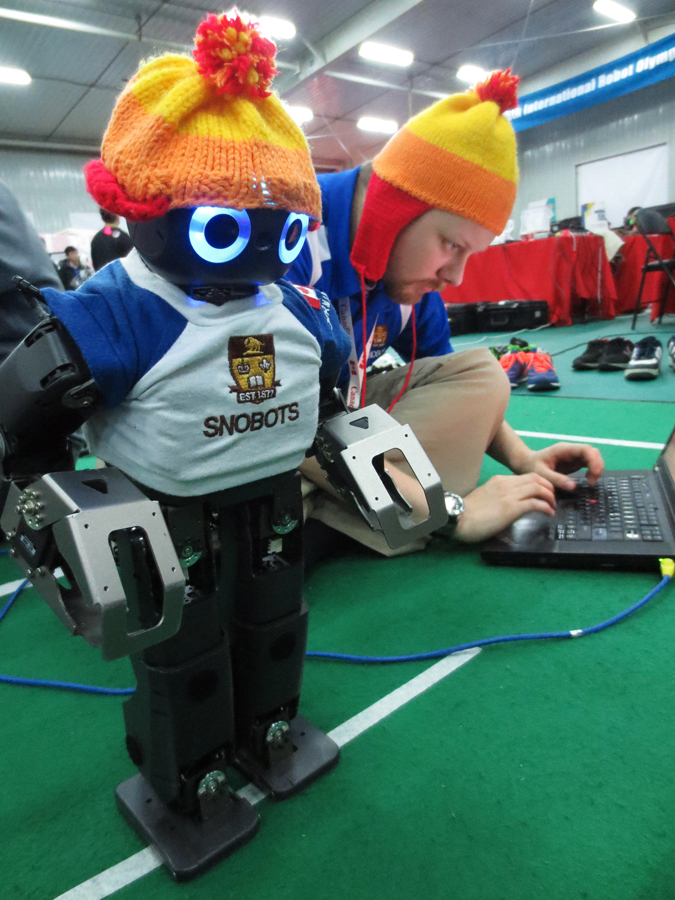Fishing line, toaster element and measuring tape: three commonly found items, yet invaluable to a student-driven team whose resourcefulness will turn these items into parts of a functioning satellite-deploying system.
Five days before the U of M Space Applications and Technology Society (UMSATS) team was to head to Ottawa for the Canadian Satellite Design Challenge (CSDC) — an annual competition that challenges Canadian university students to design and launch a fully functioning satellite — team member Matthew Driedger prepared to dry-test the deployable antenna satellite made from a yellow measuring tape.
“One major challenge for all satellites [regardless of size] is making sure that your deployable systems are as close to 100 per cent reliable as possible,” said Driedger, a PhD student.
“Because you can’t send somebody up there to give it a poke — to make the deployment work. So, the satellite has to be reliable, it has to be able to deploy without any worry when it gets into space.”
The deployable antenna system that the team devised is held under tension by ultra-high-molecular-weight-polyethylene plastic line, commercially sold as fishing line.
UMSATS ensured its satellite would be able to deploy its antenna by using the same principle as in a toaster. When the digital command is given, a nichrome wire — a conductive alloy used in toasters and other heating elements — heats up and severs the fishing line by melting it. The antenna instantly unwinds and snaps into an erect position while the solar panels swing open like a pair of wings.
From June 25 to 28, UMSATS was at the Canadian Space Agency’s David Florida Laboratory, where their tiny, cube-shaped satellite was put through testing activities including a vigorous vibration test that simulates a launch into space. The UMSATS team has not placed higher than second in their three previous CSDC competitions — always performing impressively during the preliminary reviews, but falling just short of the top position during the final testing and reviews.
This year, however, the team beat out competitors including teams from the University of Victoria and Concordia University, which came in second and third respectively, to claim first place.
Innovation and accessible learning
Philip Ferguson is a faculty of engineering associate professor at the U of M and UMSATS faculty advisor. The team chose to bring him in last year to provide advice on small satellites.
Ferguson said groups like UMSATS have the potential to make to make the complexity of satellite building, something that may seem out of reach to some, more approachable.
“The ways in which the space industry has evolved over the past five decades, or just over five decades, has been to really make space systems more and more expensive, take longer and longer to develop, and, as a result, then get them out of the reach of groups like small student groups, or Indigenous groups in the North, that could really stand to benefit from space systems research,” he said.
Ferguson, who said he hopes to help make space exploration cheaper and more accessible through his own research, explained that the students are currently challenging the status quo by pioneering the use of simple, inexpensive items to build satellites for space testing and exploration.
“They’re able to build these satellites on a shoestring budget using commercial technologies, using everyday items, and trying to push some of the kinds of technologies that, up until recently, have been sort of thought to be taboo in the space industry,” he said.
Ferguson added that within the industry it is common to hear criticisms along the lines of “’You can’t make a satellite out of 3D printing!’ You know — ‘What planet are you from? You have to make it out of a solid piece of expensive machined aluminum,’ right, and so we’re trying to find ways to challenge these assumptions that have been made in the industry.”
Supporting life in space
The UMSATS team wants to eventually send living organisms into space via satellite in the hopes of yielding insights into how to support life in space and on other planets.
In past experiments, the team used microscopic organisms called tardigrades. Because tardigrades are known to survive a host of extreme conditions including radiation, extreme temperatures and low pressures, they fit the profile for the type of organism that would survive the harsh conditions of space.
“We are trying to make it easier for life to survive in space,” said Valorie Platero, incoming UMSATS president.
The team decided to take a step back this year and start from the most fundamental level of the food chain: the primary producers. They ended up choosing bacteria called Anabaena cylindrica, a photosynthetic cyanobacterium known to survive low-nutrient conditions.
The team plans to expose Anabaena to the harsh conditions of space and see whether the Anabaena will remain viable.
Neither tardigrades nor Anabaena have been sent to space by UMSATS yet because the satellites still need to be further developed and go through more reviews before they are deemed space-ready.
With this win, UMSATS has solidified its place among Canada’s campus scientists. From here, the sky is no longer the limit.
For more information on UMSATS, contact the team at info@umsats.ca.





